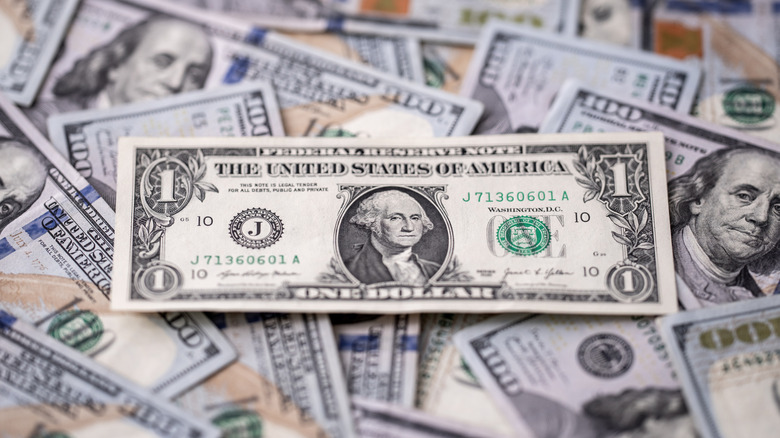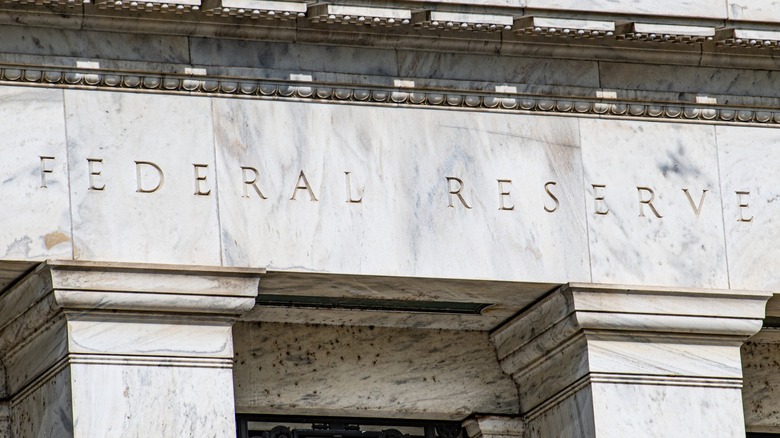What Does The Big Letter On A $1 Bill Really Mean?
Except for $100 bills, the cash denomination with the highest number of notes in circulation is the $1 bill. According to the Federal Reserve, there were 14.9 billion $1 notes in circulation in 2024. As common as these bills are, not many people know what all the symbols on the $1 bill mean. That's not necessarily a bad thing, as most of the symbols were interwoven into the note just so it's easier to identify red flags on counterfeit bills. However, $1 (and $2) bills are unique from other bills because they have a large letter on the left, next to the center portrait. This seal-like letter refers to the bill's Federal Reserve Bank (FRB) of origin. Spanning 12 letters from A to L, you can confirm this by comparing the letter with the first character of the note's serial number, as they should be the same.
Here's what FRB each of the letters stand for: A for Boston (1), B for New York (2), C for Philadelphia (3), D for Cleveland (4), E for Richmond (5), F for Atlanta (6), G for Chicago (7), H for St. Louis (8), I for Minneapolis (9), J for Kansas City (10), K for Dallas (11), and L for San Francisco (12). That's why you'll see a "G7," for instance, on the left side of a $100 bill from the Chicago FRB but a "G" seal on a $1 note from the same place.
What purpose do the district identifiers serve today?
The Federal Reserve could have picked many other ways to identify dollar notes, but tying them to their respective Reserve Banks helps with logistics and accounting, and it's also required by law according to the Federal Reserve Act. Since the Reserve Banks are where the currency is distributed from, this method shows when and where the notes were printed and could be useful when tracking them. If you know what to look for, dollar bills actually hold a substantial amount of information, including what year the bill was designed, through the "bill series" designation.
The Reserve Bank district identification system is a good method in terms of longevity, as well. Since the Federal Reserve Act created a regional central-bank system in 1913, rather than a single national bank, the U.S. has had 12 Reserve Banks since 1914, despite having the option to have as few as eight. These Reserve Banks have been around and active for over 100 years, and could easily do so for another century. Getting something from one side of the country to the other was a lot harder in the early 20th century, and the seals representing all 12 FRB locations probably resonated with citizens as a symbol of national unity. While that effect might not be so poignant today, it does serve as a reminder of the FRB's status as an enduring institution.

